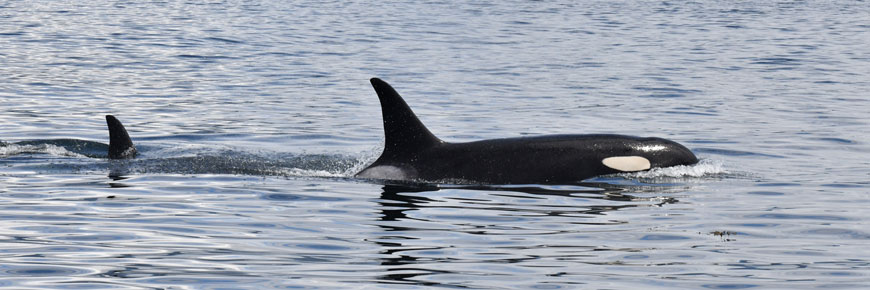
Explore the Parks Canada Superpod Blog and meet people along the Pacific Coast who are taking action to help protect Southern Resident Killer Whales.
-
August 01, 2022: Donna Sandstrom – The orcas aren’t giving up and neither can we.
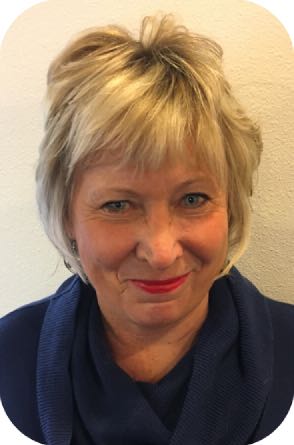
When Donna Sandstrom heard about Springer (A73), a young wayward orca who was discovered near Seattle, the course of her life changed. The orca had become separated from her family, and was more than 300 miles away from her home range. After months of debate surrounding the orca’s fate, Springer was rescued and returned to her pod near the north end of Vancouver Island. The historical effort was led by Fisheries and Oceans Canada, NOAA Fisheries and the Vancouver Aquarium. Donna led community efforts to support the rescue, as part of a nonprofit coalition called the Orphan Orca Fund. Springer’s rescue and return is the only successful project of its kind.
Around the same time, the Southern Resident Killer Whales were at the start of a steep decline. When Donna read that J, K and L pods could go extinct in less than 100 years she knew she had to act. Inspired by how people worked together to save Springer, she founded The Whale Trail in 2008 with a team of partners including NOAA Fisheries, Washington Department of Fish and Wildlife, and Seattle Aquarium.
The Whale Trail is a series of places to view orcas or other marine mammals from shore. The project began with 16 sites in Washington state. In 2015 The Whale Trail expanded to British Columbia, under the leadership of Ocean Wise, and has now grown to more than 140 sites along the north American west coast. Some of Donna’s favorite sites are Point Robinson in Washington, Lighthouse Point in Santa Cruz, and East Point on Saturna Island.

The Whale trail is a community effort that continues to inspire. Donna made sure to tell us how very grateful she is for the partnerships and deep engagement with other organizations that make the Whale Trail possible.
Most Whale Trail sites feature signs describing the animals that can be seen at that location. The signs reach a broad and diverse audience—people hiking, biking, riding a ferry or out for a stroll. “It’s thrilling to see a whale—or any marine mammal—in the wild.” Donna says. “Whether you see an animal or not, the signs tell their story, and can spark the awareness that leads to conservation.
Watching from shore is increasingly a part of the solution for the endangered Southern Resident Killer Whales.
Resident orcas use echolocation to hunt for their food. “It’s not just the number of salmon that matter, but how available they are to the orcas.” Donna explains. “A recent study shows that female southern resident orcas stop foraging when vessels approach closer than 400 yards. Reducing noise is one thing we can do right now that will help, by making it easier for them to forage, and rest, and hear each other. For the southern residents, the best way to watch them is from shore. And lucky for us, the Salish Sea is ringed with locations where that is possible.”

We asked Donna what folks at home could do to help southern residents, her answer was to get educated and to get involved. “Your voice matters”, she explains, stating that involvement empowers governments to make big changes.
But whatever happened to Springer, the whale that originally inspired Donna? The 22-year-old orca now has two calves of her own– 10-year-old Spirit (A104) and 5-year-old Storm (A116). Donna and other members of the rescue team celebrated the 20th anniversary of her homecoming with events in Seattle (July 14- 16) and Telegraph Cove (July 22- 24).
To wrap up our conversation, Donna reminded us that “It’s not too late to save the Southern Resident Killer Whales. Can we make the Salish Sea a place that will sustain them again? Because of Springer, I have hope. The orcas aren’t giving up, and neither can we.”
Thank you, Donna! Want to learn more? Explore WhaleTrail.org and check out Donna’s new book “Orca Rescue!”
You can help protect Southern Resident Killer Whales too! When you’re on the water, remember to give whales space, respect Interim Sanctuary Zones and be aware of fishing closures.
Learn more and stay up to date on current management measures
-
August 08, 2022: Emily Perkovic – All of us are connected to the ocean.
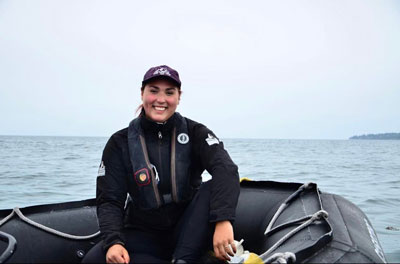
Emily Perkovic has spent her life surrounded by water. Growing up, her summers were spent in cottage country by the lakes near her hometown of Toronto. In high school, she started scuba diving. And in university, she decided to move to Victoria to explore the West coast. It’s not surprising that all of this time spent on, in and near the water led to an ocean-focused career. As the current Straitwatch Coordinator with Cetus Research and Conservation Society, Emily and her team lead a stewardship-based marine mammal monitoring and education program out of Victoria and Quathiaski Cove on Quadra Island.
As the Straitwatch Coordinator, Emily spends a lot of time out on the water. This means she has a lot of great stories too. In 2020, Emily witnessed a Southern Resident Killer Whale superpod! All three of the Southern Resident Killer Whale pods (or groups with common ancestors) came together. But there was actually one more killer whale than researchers were expecting! Tahlequah (J35), famous for carrying her dead calf for 17 days in 2018, had just given birth to Phoenix (J57)! “It felt like they were getting the whole family together to celebrate”, said Emily. Emily took this experience as a sign of hope for the Southern Resident Killer Whale population and for Tahlequah after her loss two years prior.
The ocean is home for Southern Resident Killer Whale families, and we’re just guests in their house. Protecting their home is one of the many ways that Emily and her team at Straitwatch work to recover the Southern Resident Killer Whale population. They collect data on whale locations and incidents involving vessels. They also inform boaters on the water about maintaining a safe distance from whales to reduce disturbances and collisions. For the team, it’s encouraging to see boaters taking action on the water like slowing down, changing their course, or reeling in fishing gear when there’s a whale in the area. These actions really do make an immediate positive difference for the whales.
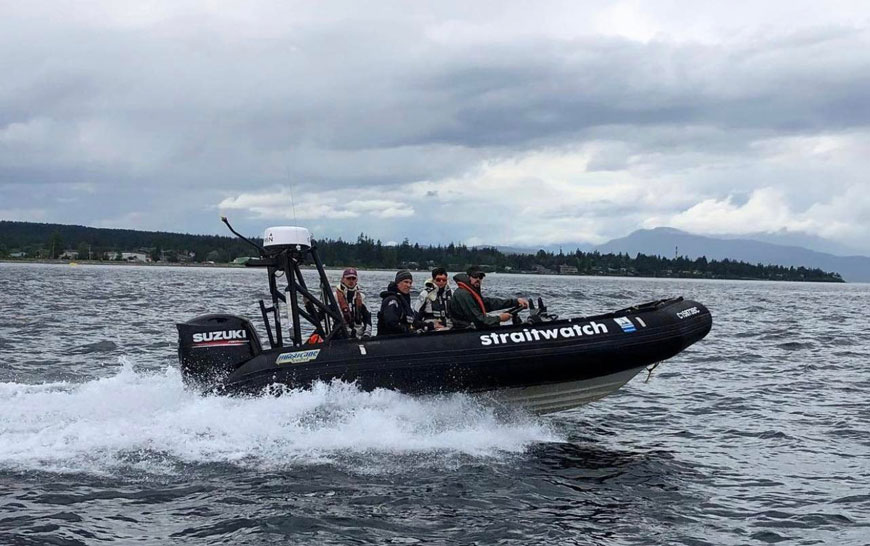
According to Emily, everyone can play a role in protecting Southern Resident Killer Whales. If you’re a boater, she says that giving whales space is one of the biggest things that you can do to help. Those who aren’t on the water can help by choosing sustainably caught seafood options. Any actions to reduce greenhouse gas emissions and slow climate change will also help the habitats of not only Southern Resident Killer Whales, but all animals on the planet. Emily and most of her team bike to work, sometimes while balancing their scientific equipment on their handlebars!
At the end of our conversation, Emily reminds us that “everything we do can have an impact on Southern Resident Killer Whales and their food web. No matter how small. The land and water are interconnected. Taking extra care both in and out of the water will help to protect all the families that call the ocean home.” All of us are connected to the ocean. Let’s work together to make sure this connection is a positive one.
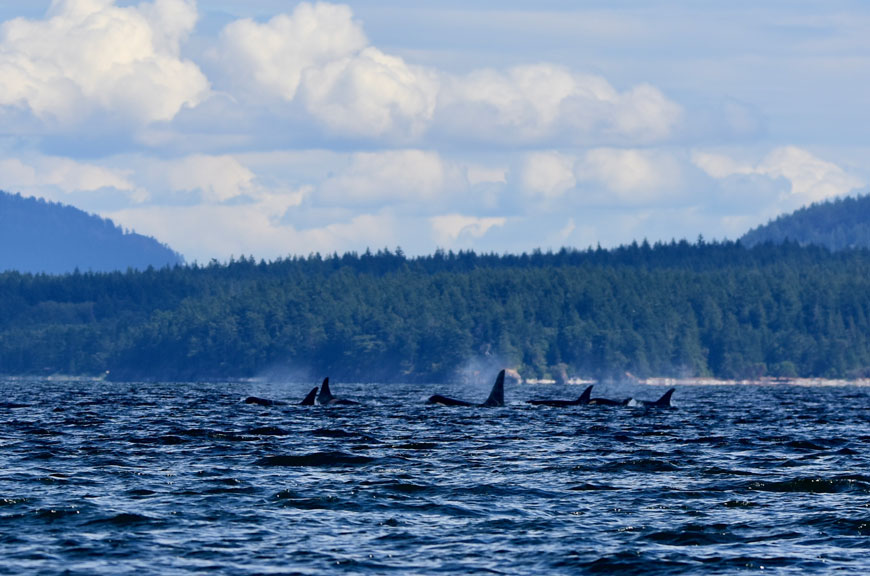
Thank you, Emily! Want to learn more? Check out what Cetus and Straitwatch are up to this summer.
You can help protect Southern Resident Killer Whales too! When you’re on the water, remember to give whales space, respect Interim Sanctuary Zones and be aware of fishing closures.
Learn more and stay up to date on current management measures
-
September 07, 2022 : Dana and Jocelyn Buchart – a father-daughter duo that love to fish together
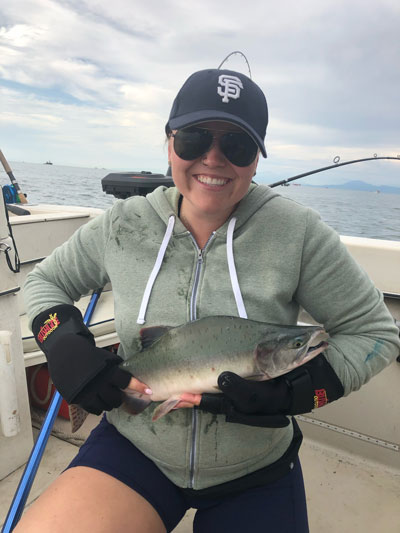
Dana has always loved the coast and he truly enjoys all that the ocean has to offer. In his free time, you can catch him windsurfing, diving, and admiring diverse ocean life from the smallest crabs to the biggest marine mammals.
Dana’s passion and curiosity for the ocean continues on in his daughter, Jocelyn, too. Jocelyn has loved all things ocean-related since she was a little girl thanks to memorable snorkeling and fishing adventures with her family.
Over the years, Dana and Jocelyn have spent many long days on the water together during family fishing trips. It goes without saying that with this much time on the water, they have some great stories to share!
Once, while traveling on board BC Ferries on Jocelyn’s birthday, their ship came to a halt as a pod of killer whales was spy-hopping and tail-slapping all around them. It was a pretty fantastic birthday present!
Dana has had many more memorable sightings of killer whales on board the Buchart family fishing boat too. From picture-perfect moments of an orca gliding under the boat to young adult whales mouthing (and spitting out) Coho salmon on the end of his fishing line, Dana has seen it all!
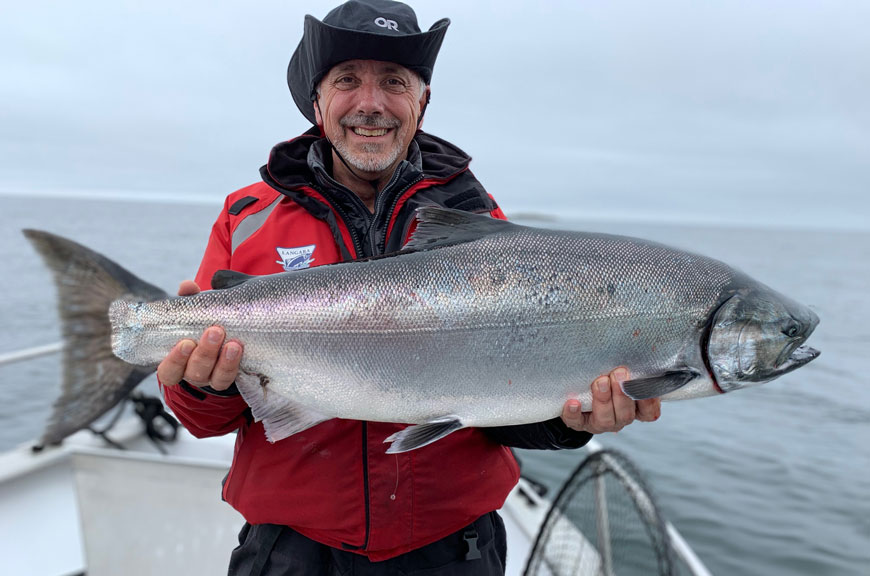
The endangered Southern Resident Killer Whales primarily eat Chinook Salmon but are struggling to find enough food to eat. We asked both Jocelyn and Dana what actions they take to ensure they can continue to enjoy fishing while also supporting Southern Resident Killer Whale recovery. “If there are killer whales in the area around your boat, pull up your down rigger and fishing lines, put your boat in neutral if safe to do so, and enjoy the show”, explains Dana. In addition, they both shared that it’s important to be aware of fishing closures. “Fishing closures are there for a reason. Respecting the [fishing] closures, and following catch and release practices in other areas, are some of the best ways to protect killer whales as a fisher”.
As you can tell, Jocelyn and Dana are passionate about the ocean ecosystem. “Back in the day, orcas were considered a curse. Now they are considered a blessing. I like to think that I have been part of changing that culture as they have always been a blessing to me. I’ve always been vocal about protecting them” says Dana.
These two Southern Resident Killer Whale advocates could share stories for hours. With each story they hope to connect with someone new and inspire them to learn more about why endangered species, like the Southern Resident Killer Whales, are so important to the ocean ecosystem.

Thank you, Dana and Jocelyn! Want to learn more? You can help protect Southern Resident Killer Whales too! When you’re on the water, remember to give whales space, respect Interim Sanctuary Zones and be aware of fishing closures.
Learn more and stay up to date on current management measures
-
September 22, 2022 : Kendy – you don’t need to be a scientist to help protect killer whales.
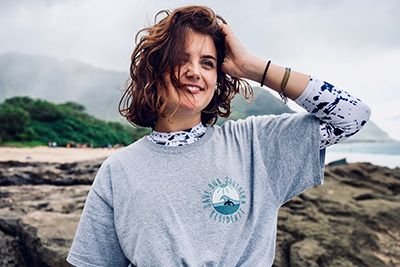
Kendy grew up in Arizona, nowhere near the ocean, but this didn’t stop her from falling in love with Killer Whales. It all started on a family trip to SeaWorld where it became her dream to work at a marine park. She attended University in Hawai’i, started diving, and fell in love with being underwater. While attending university she could almost always be found freediving, participating in a beach cleanup, or working away in a wet lab.
Spending all of this time near the water changed her life. These experiences opened her eyes to the threats of plastic pollution. She became focussed on pursuing a career in conservation.
Kendy discovered that Killer Whales, as apex predators, are some of the most contaminated marine mammals in the world. She wanted to help protect them. She made it her goal to work near the Southern Resident Killer Whales and took action to connect with organizations and researchers in the Pacific Northwest. She now works as the Social Media Coordinator for the Rivershed Society of BC.
The first wild Killer Whale that Kendy ever saw was Rainshadow (K37). She told us that he will always hold a special place in her heart. She went on to explain, “Ecologically and culturally, these whales are important to the Salish Sea. Losing [the Southern Resident Killer Whales], an apex predator, will impact every species beneath them, including humans”. Protecting killer whales, and biodiversity, is important for preserving a healthy ecosystem.
Kendy now uses the power of social media to share her stories and encourage others to take action. She uses her social media platforms (@intertidalkendy) to speak up about conservation and marine science. On her page you’ll find incredible content like informational “how-to’s”, killer whale news, and inspiring diving photos! Offline, Kendy is known to talk about whales whenever the opportunity arises.
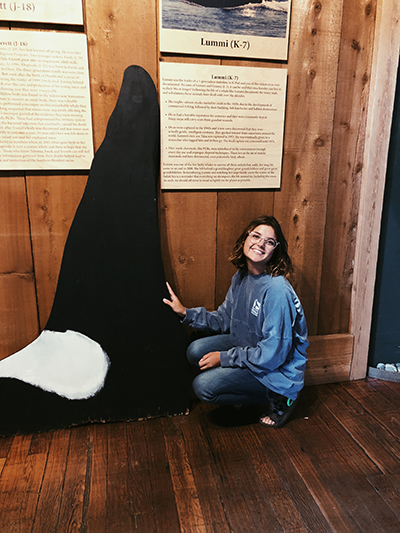
Do you want to help protect killer whales? “Get involved! Speak up!”. According to Kendy, you can protect killer whales from wherever you are. In university, Kendy organized letter writing campaigns and made phone calls to government officials to urge them to take action to protect the Southern Resident Killer Whales and the salmon they rely on.
Kendy reminded us that “you don’t need to be a scientist to protect Southern Resident Killer Whales”. Your words, your voice and your everyday actions (like keeping your distance from whales while you’re on the water or taking that reusable water bottle with you!) matter.
Want to learn more about what Kendy is up to and how to get involved? Check out her Instagram account and discover three ways you can help protect Southern Resident Killer Whales.
Learn more and stay up to date on current management measures
-
November 03, 2022 : Lucero Gonzalez – A journey with the ocean
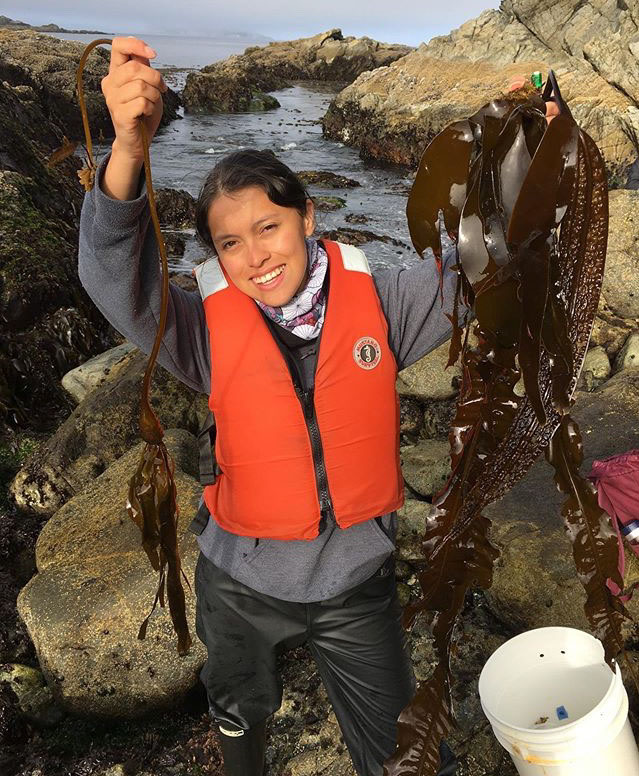
Lucero Gonzalez was fearful of the ocean for a majority of her life. So how did she end up at Georgia Strait Alliance actively working to help protect Southern Resident Killer Whales and rallying a community of people to do the same? Lucero shared with us her healing journey with the ocean, why she finds Killer Whales so enchanting and how our individual actions really matter on the road to their recovery.
Lucero shared a lot about her journey with the ocean. It started with a terrifying incident that turned her away from the water for years, to a photography job at the Vancouver Aquarium that allowed her to experience the underwater world from land, and finally to an inspiring trip to the Bamfield Marine Sciences Centre that encouraged her to focus the rest of her undergraduate degree on marine sciences.
What stood out most through her story was her genuine curiosity and willingness to learn more about something that really scared her. For others who may not feel a connection to the ocean, she recommends to start close to home. “Build a sense of place. Find personal similarities that help you feel connected to the environment or species”.
She went on to say that even though she’s never seen a Killer Whale in the wild, she still feels a strong personal connection to them. She is captivated by their unique culture. Killer Whales live in a complex matriarchal society. They live in close-knit communities know as pods, made up of females and their offspring. Each Killer Whale pod teaches their young which language to speak and what food to eat. Lucero reflected on the matriarchs in her own life noting that her Mom and Grandmothers have played an important role in who she is today.
And speaking of language, did you know you can listen in to Killer Whales through a network of hydrophones? Lucero’s favourite place to listen is OrcaSound. Hearing their calls and reading about encounters through the Centre for Whale Research helps her feel connected to the species.
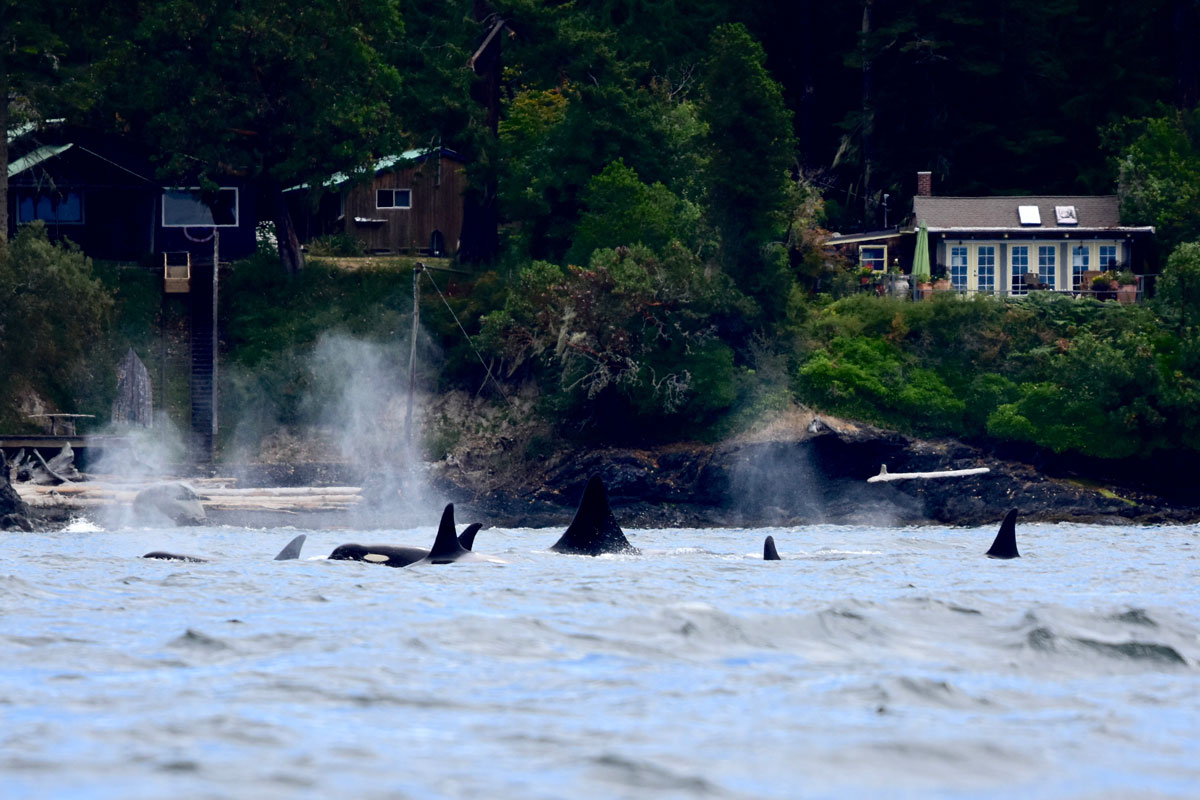
Photo by Emily Perkovic For folks wanting to take action to help protect Killer Whales, Lucero shared three simple things we can do:
- Know the regulations. If you are in the water these are crucial. However, from land you still play an important role in reporting violations and educating others.
- Know the power in your individual actions. For example, using tools like Georgia Strait Alliance’s ToxicSmart Guide helps to keep you, your home and the environment toxic free.
- Use your voice. Talk to your local representatives about issues that matter to you. Tell your friends what you’ve learned.
Lucero is well on her way to repairing her relationship with the ocean. But working behind the scenes to protect an endangered species brings along its own set of emotions. Thankfully Lucero knows she’s not doing this work alone.
“When I’m feeling frustrated or sad, I write. I share my emotions to empower people and encourage action. I appreciate when people share feedback with me and let me know their thoughts and feelings too. It really shows me there is a community behind this work and that we are all in it together.”
So here is your friendly reminder to say “thank you” to those who are inspiring you to take action to protect Southern Resident Killer Whales. Like Lucero said, your voice matters.
Thank you, Lucero!
-
November 29, 2022 : Gary Sutton: Follow your passion, learn something new and stay curious
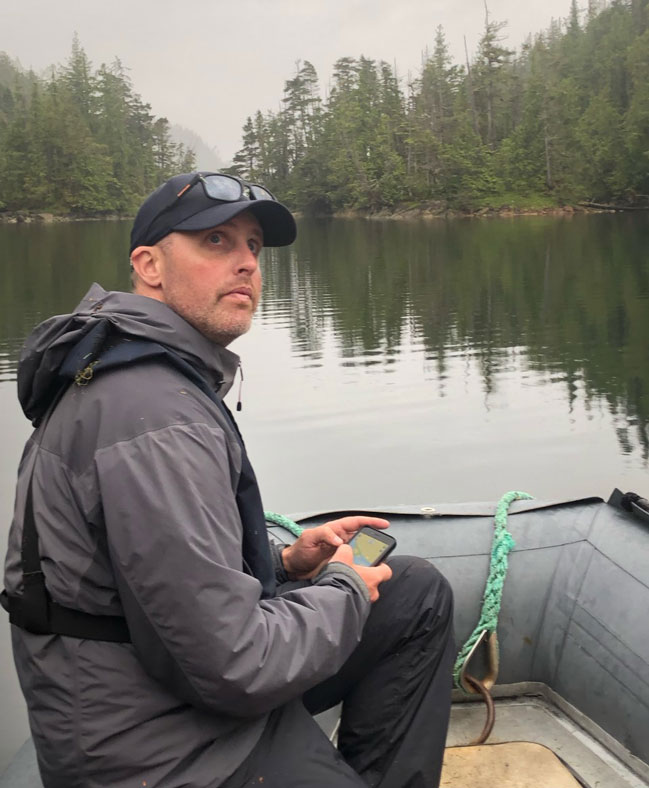
Gary Sutton (also known as “dolphin boy” in grade school) is one of those people you can talk to for hours. He has a contagious energy that encourages you to take action and follow your dreams. If you already love whales but you’re not sure what to do next, Gary has some tips for you!
Gary currently works with the Whales Initiative at Ocean Wise as a Research Technician with the Body Condition and Health Monitoring Program. His team takes aerial photos of Killer Whales to help assess their health, which is an ongoing collaborative project that launched in 2014. He operates the team vessel, helps with setting up the drone and is the photo ID specialist.
Gary has been fascinated by dolphins and whales for most of his life. His grade school nickname is a result of endless ocean themed doodles and a stream of library books on his desk. For folks who can relate and are curious about careers connected to Killer Whale protection, Gary says, “if you care, take action. If you have a passion, follow it. Don’t worry too much about taking the “traditional” route to get there.”
Gary definitely didn’t take the “traditional” route. After growing up in Ontario he moved to Vancouver in 2007 with no real plans other than to be closer to the whales. He eventually found himself volunteering at the Vancouver Aquarium and then working with a whale watching company. This is where he really had the opportunity to hone in on his photography and identification skills, and of course continue to build his love and connection to whales. He was able to gain field and operational experience and develop new relationships with other people keen to help protect Killer Whales. With so much time on the water, there was no time to finish school. He had so much more to do and learn in the field.

Gary is generous with his knowledge as he hopes other people will get involved and learn to care about whales too. We commonly get asked how to identify individual Killer Whales so we couldn’t let Gary go without asking for some whale identification tips! If you’re hoping to build your whale ID skills, Gary encouraged us by noting “the more you do it, the better you get”. There are some whales, like K20 with a big open saddle patch, that can be easy to identify. He also suggested that if you come across a group of Killer Whales your best bet is to try and identify the largest male first and then go from there. You can also find the Bigg’s Killer Whale ID catalogue (and more) online for free if you want to get some practice in!
When it comes to Killer Whale protection he urges people “to look at the bigger picture and understand how all of our daily habits help play a role in their protection.” As suggested by previous guests, learn more about the Killer Whale protection measures, enjoy sustainable seafood choices and explore tools like the ToxicSmart Guide.
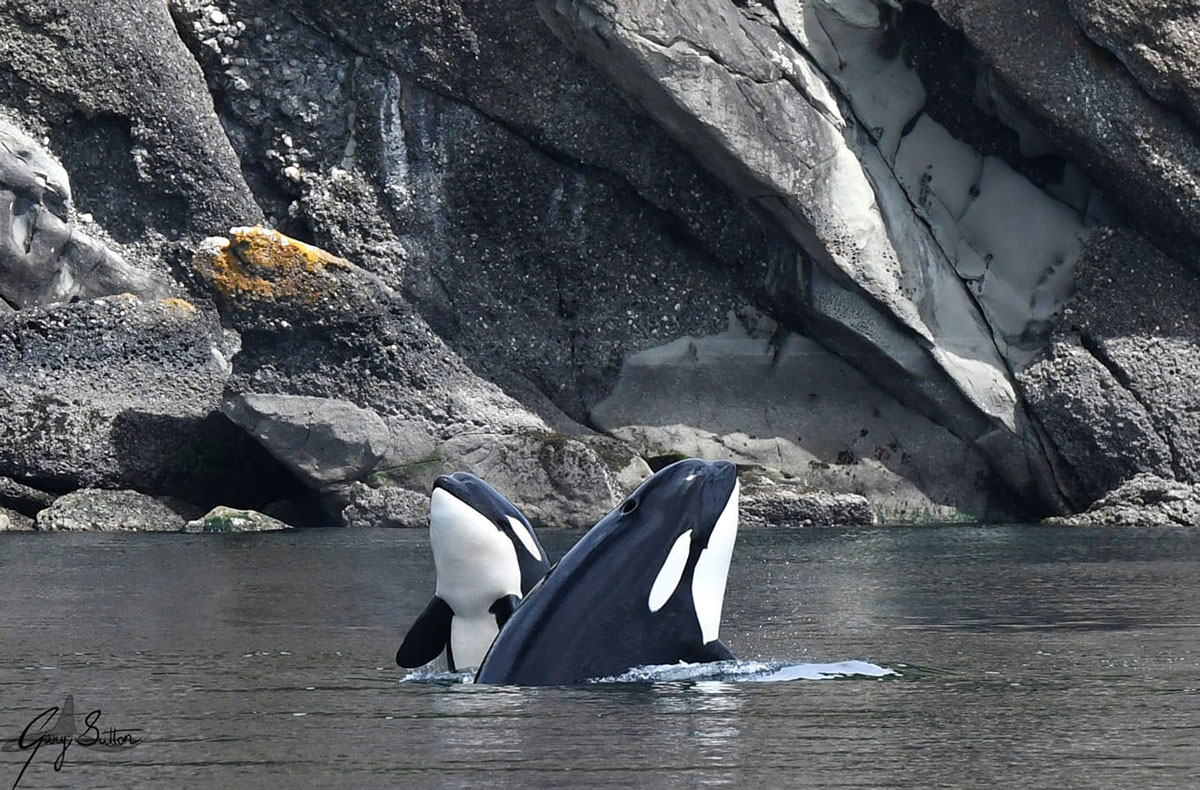
So what’s next for Gary? He’s staying curious of course! And he hopes you do too. The Ocean Wise team will be leading a winter monitoring program to better understand Southern Resident Killer Whale distribution and diet in the months where there is far less research taking place. There is still so much to learn! Gary has been on the water for 15 years and still can’t wait to see what he learns next.
Get out there, follow your passion, learn something new, stay curious and be sure to help protect Killer Whales along the way!
-
December 12, 2022 : Kelsey Lee – What can we do about contaminants?
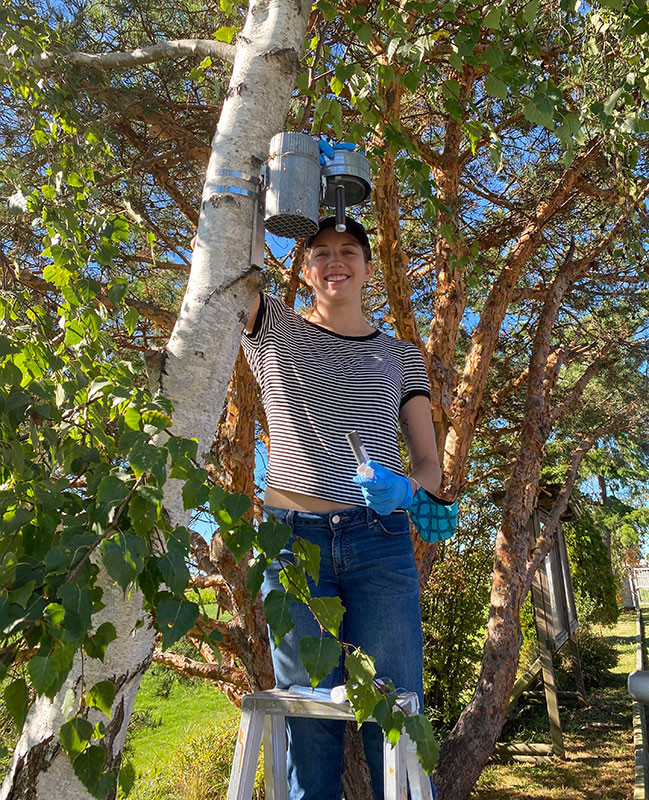
Southern Resident Killer Whales are endangered. There are only 73 individuals left. They struggle to find enough salmon to eat and they are vulnerable to environmental contaminants. Also, boat disturbance and noise interferes with their ability to find prey and communicate with each other.
We take tangible actions, like keeping 400m away from all Killer Whales, respecting fishing closures and avoiding interim sanctuary zones, to help reduce impacts related to prey availability and disturbance from boats. But what can we do about contaminants*?
This is where Kelsey Lee comes in. Kelsey is a Masters student at Simon Fraser University in the Resource and Environmental Management program. Her passions for learning and data make her the perfect candidate to study the tricky subject of contaminants. She’s currently working on a thesis titled “Identifying sources of polychlorinated biphenyls to the Southern Resident Killer Whales within the Salish Sea using passive sampling and chemical activity”. See, told you it’s tricky!
Kelsey has a fire in her belly when it comes to contaminants. In her undergrad she took an environmental toxicology course that changed her forever. “I just could not believe how limited the regulations are for so many chemicals”, she told us. “It’s a bit overwhelming when you think of how many contaminants we interact with in our day to day lives. Often we are totally unaware.”
As apex predators, Killer Whales are particularly vulnerable to contaminants. According to Environment and Climate Change Canada, “since Southern Resident Killer Whales are at the top of the food chain, many of these contaminants accumulate in their body fat”. This is of particular concern with the Southern Resident Killer Whales because they are struggling to find enough food to eat which means they must rely on their blubber (fat) for energy. Using up those fats releases the contaminants into their bloodstream. The contaminants are harmful to their health as they can disrupt their immune system, their hormones, and cause reproductive impairments.
Environment and Climate Change Canada is leading the way when it comes to reducing the threat of contaminants to Southern Resident Killer Whales. As part of this process, the Contaminants Technical Working Group took steps to identify priority contaminants of concern (e.g. PCBs, DDT).
Kelsey is collecting data from 50 passive air samplers and 10 passive water samplers to learn more about the levels of these contaminants in Southern Resident Killer Whale habitat. The results will provide a better a look at what the current contaminant levels are and where there may be local sources of contaminants. She has found that while there are local sources of air contaminants, the greatest concern is the contaminated sediment in the Strait of Georgia. This information can help guide contaminated site remediation projects and support long-term actions like continued monitoring and enhancing regulatory controls.
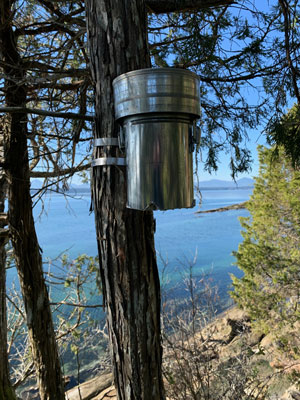
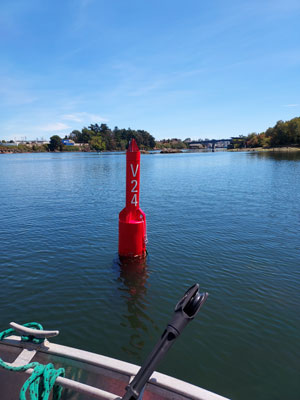
Photo caption: Kelsey’s passive air sampler and passive water sampler
There is still so much to learn in the field of contaminants. It is encouraging to hear Kelsey speak and see how driven she is to learn more and strive for results that can create positive change for Killer Whales and humans too.
As a day-to-day call to action for individuals, Kelsey encourages folks to remember that everything is connected. Killer whales are viewed as an indicator species, and the decline in local killer whale populations may indicate stressors that eventually will affect the whole ecosystem. Share what you’ve learned about environmental contaminants, be mindful of what you put down the drain and take action to support salmon recovery so the Southern Resident Killer Whales can find enough food to eat.
To learn more about research and actions related to contaminants please visit:
- Environment and Climate Change Canada – reducing the threat of contaminants to Southern Resident Killer Whales
- Tracking Contaminants in Killer Whale Habitats - Ocean Wise
- Persistent Organic Pollutants: A Global Issue, A Global Response | US EPA
- PCB (Polychlorinated Biphenyls) | Health and Social Services (gov.nt.ca)
*Contaminant definition from Kelsey: A contaminant is either a biological, chemical, physical or radiological substance that becomes harmful for humans or living organisms when accidentally or deliberately introduced to air, water, soil or food. In this case, we are talking about chemical contaminants.
-
January 26, 2023 : Lynden McMartin - Knowledge is power
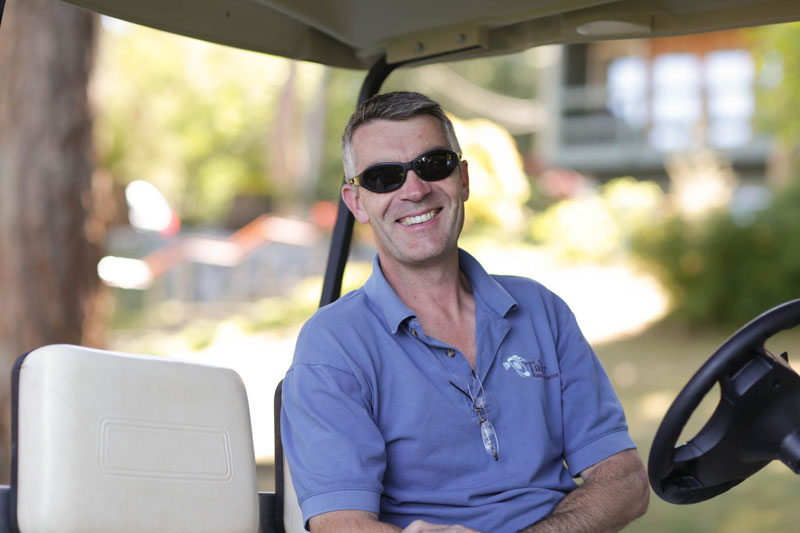
Each summer the Parks Canada Southern Resident Killer Whale Outreach team visits docks, marinas and parks around Vancouver and Vancouver Island to talk about safe boating around whales. We usually start the conversation with a simple question: “Have you ever seen a whale before?”. It’s the perfect icebreaker as almost everyone has a story of a whale encounter to share! The boating community is full of passionate storytellers.
Lynden McMartin is the General Manager at Taku Resort and Marina on Quadra Island. He shared the same sentiment. He said “the boating community is very social. They are always chatting about their trips; what they’ve seen and where they are going. Seeing a whale is often the highlight”. Lynden has worked at Taku Resort and Marina for 17 years. Coming from the Okanagan and the Lower Mainland, he absolutely fell in love with the amazing community on Quadra Island and his new ocean backyard.
When Lynden first started working at Taku Resort and Marina, it was pretty rare to see a whale swim by. Now he sees whales daily throughout the summer, mostly Humpback Whales and some Killer Whales too. “Hearing stories about whales from the guests is actually a good way for me to keep track of them” he said with a laugh.
He also acknowledged that he loves sharing the experience of seeing whales with others. When a whale is spotted near the marina they let everyone on the dock and in the cabins know that a whale is close by. It’s pretty fun to have everyone out on shore asking questions and swapping stories. “People are really inspired by the awe and wonder of whales. They are keen to learn. Knowledge is power”.
.jpg?h=600&w=900&hash=64D4109D3E8D4A559AE39B766F79F83B)
Lynden is right about that. He reflected that there are a lot of folks who just aren’t aware of the rules when it comes to boating around whales. That can be dangerous for the whales, and for the boaters.
Particularly for species like the endangered Southern Resident Killer whales, it’s important to give them space to hunt, rest and communicate with each other without disturbance from boats. He encourages boaters to use the Whale Warning Flag to let people know whales are in the area. If you see one of the Whale Warning flags flying on a boat near you, it means you should reduce your speed and proceed with caution. Taku Resort and Marina also has a “See a Blow? Go Slow!” sign at the end of the dock. This is a friendly reminder to be aware of your surroundings and take caution if you see signs of whales (like a blow).
What can you do to help protect whales while you’re on the water? Keep chatting with your friends and fellow boaters! Share what you learn. Remind your friends to keep their distance from whales and other marine mammals. Call fellow boaters out if they aren’t following the rules and regulations. We can all help each other take action by spreading the word and leading by example.
Lynden and the team at Taku Resort and Marina do just that. You can often find Lynden talking with guests to remind them to give whales space. The Marina is also part of Georgia Strait Alliance’s Clean Marine BC Program which is an eco-certification program that recognizes marinas, boatyards, and other boating facilities for their implementation of environmental best practices. All of these actions help to spark important conversations among the boating community.
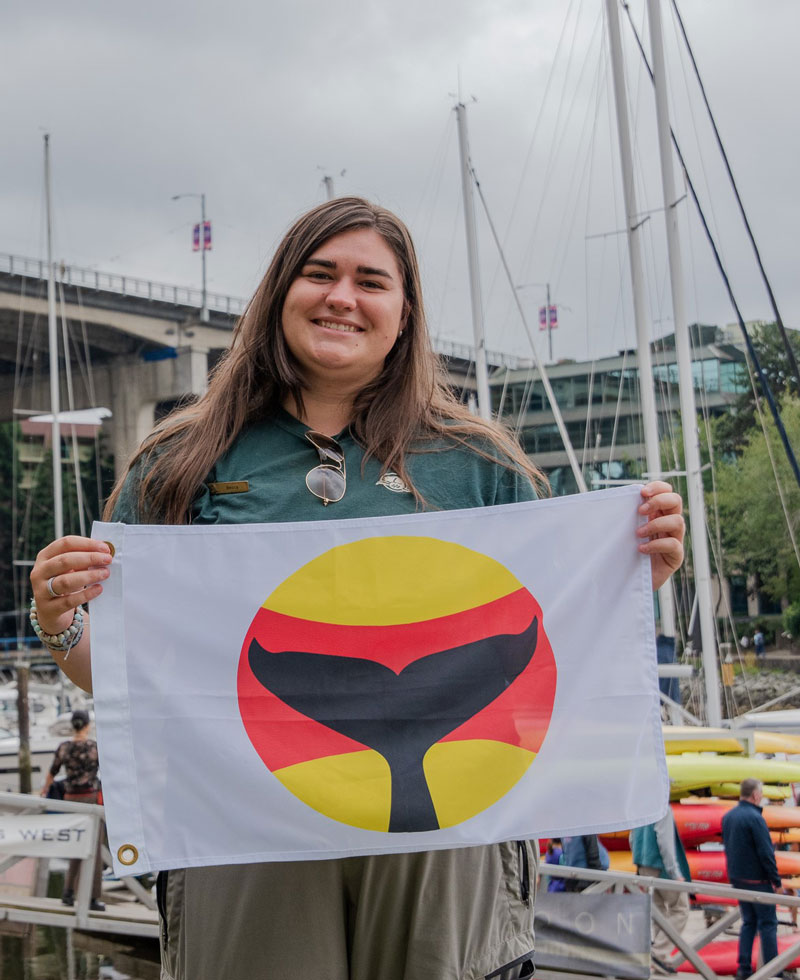
As Lynden shared, it’s pretty exciting to see more and more whales each year. Let’s keep it that way!
When you’re on the water, remember to:
- Give whales space. If a whale appears near you, turn your engine to neutral and let the whale pass. Don’t follow them.
- Keep 400m away from Killer Whales in southern BC coastal waters
- Keep 200m away from Killer Whales in all other Canadian Pacific waters
- Keep 100m away from all other whales, dolphins and porpoises
- Respect Interim Sanctuary Zones
- Learn more and stay up to date on current protection measures for Southern Resident Killer Whales
- Give whales space. If a whale appears near you, turn your engine to neutral and let the whale pass. Don’t follow them.
-
February 22, 2023 : Nora Nickum - Helping families and kids connect with the ocean and whales

Did you know that Killer Whales have best friends? In a recent study, Dr. Michael Weiss and other researchers reviewed drone footage and recorded over 800 instances of physical contact between individual whales. From this, they suggest that Killer Whales may have “best friends”. These “best friends” are often the same sex, of similar age and can be found regularly interacting with each other.
Talk about a great conversation starter!
Nora Nickum, the Senior Ocean Policy Manager at the Seattle Aquarium and the author of a new children’s book about the Southern Resident Killer Whales, shared this “best friend” fact with me. “It’s a great way to get kids thinking and building connections to another species,” she shared.
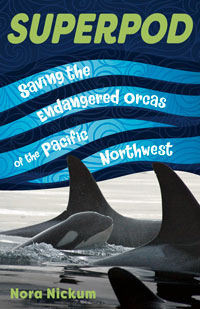
Nora grew up on Bainbridge Island and San Juan Island, exploring the tidepools and watching whales from shore. When asked about one of her most memorable moments with whales, she went all the way back to her high school days. “I had camped outside with some friends and our alarm that morning was the sound of Killer Whales taking breaths as they swam by. One of the best parts was sharing the excitement and experience with friends who had never seen whales before."
Nora is driven to share her knowledge and experiences with others. As a mother herself, she especially enjoys providing tools to help families and kids connect with the ocean and whales. Her new book Superpod: Saving the Endangered Orcas of the Pacific Northwest (particularly aimed at kids ages 8-12+), does just that. She loves talking to kids about whales because “they take in the information and then think outside the box when it comes to problem solving”. It’s fun to share in the enthusiasm.
Taking action to help protect an endangered species, like the Southern Resident Killer Whales, can feel daunting. Especially for people who are just learning about them! Nora encourages kids and families to “share what you’re learning in a way that you’re passionate about – sing, dance, draw, read books, do a research project together or go on a family trip to explore The Whale Trail”. Nora’s daughter is really into Killer Whales right now, especially J42 Echo, so they are working on identification skills together. Nora’s favourite Killer Whale is J27 Blackberry because he was the first individual she was able to identify from a photo she had taken herself.
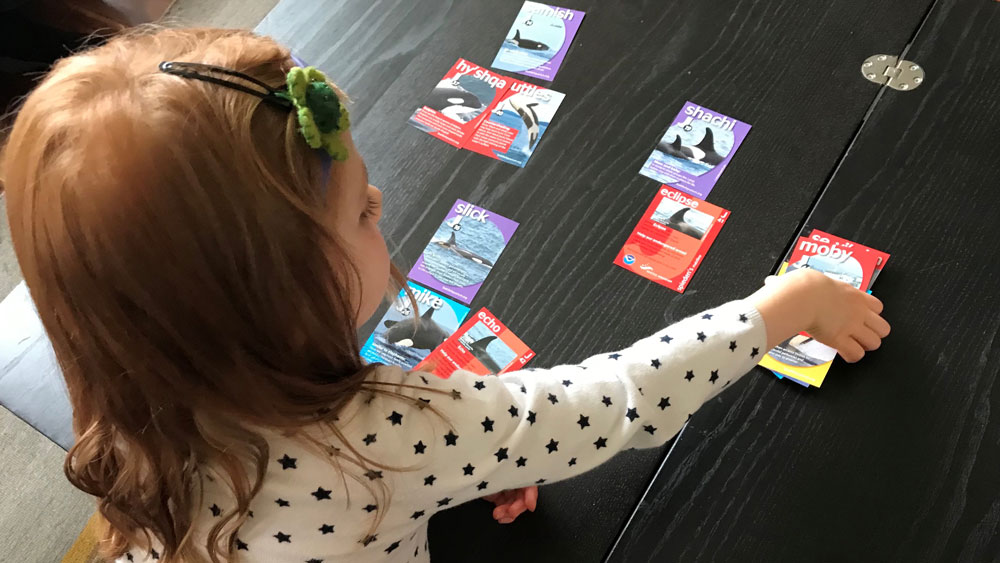
Like Killer Whales, humans need social connections too. There are many fun ways to connect as family or friends in a way that’s meaningful to you that will also be meaningful to Killer Whale protection.
And remember, you’re not alone. There is a whole community of people learning and taking action with you! When Nora is out shore-based whale watching she loves to share that experience with others; especially those who don’t know whales are coming or it’s their first time seeing whales! If you’re lucky, maybe you’ll bump into her next time you visit Lime Kiln State Park.
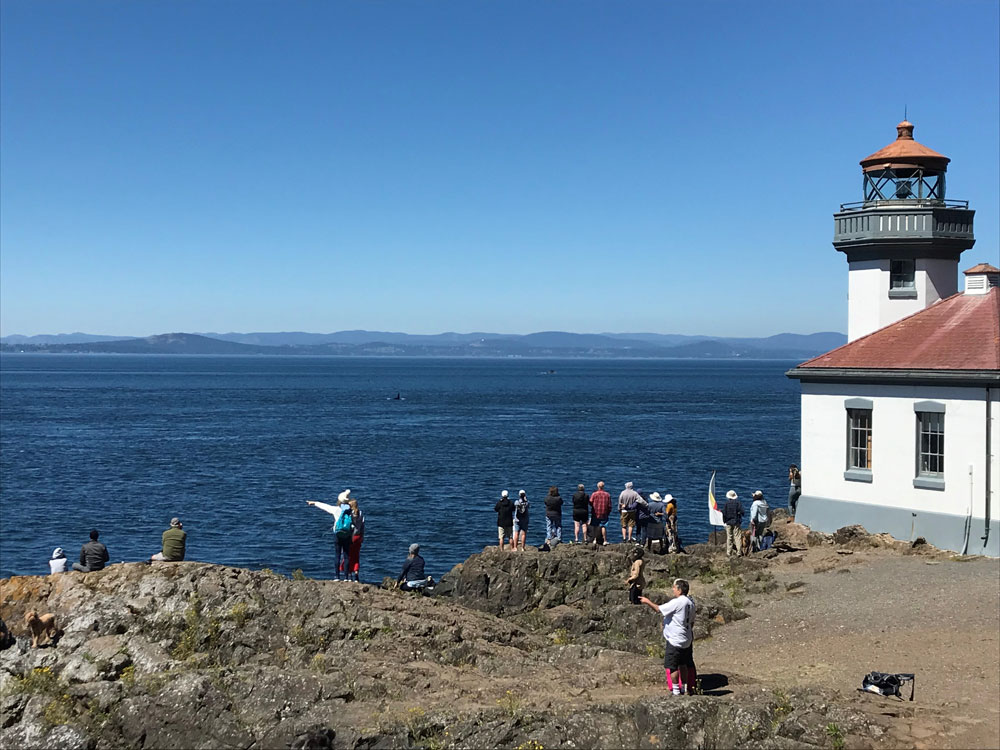
Through her work with the Seattle Aquarium, Nora is an advocate for policy. In her personal life, she is an advocate through creative writing. We hope you and the kids in your life can find your own unique ways to be an advocate too!
Learn more and discover three ways you can help protect Killer Whales!
-
November 27, 2023 : Dr Stephen Raverty - Learning what we can from those who have passed
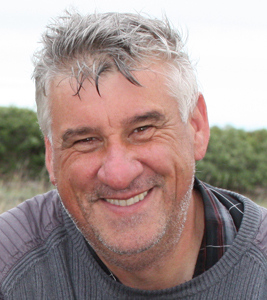
Most of us are passionate about seeing whales when they're alive, but what about after they’ve passed? Dr Stephen Raverty is interested in just that. Dr Raverty is a veterinary pathologist, meaning he works in the study of diseases as they relate to animals. He is especially interested in marine mammals, an interest that takes up 30 to 50 percent of his time.
With this special interest in marine mammals, Dr Raverty has worked on many cases pertaining to whales. From the decreasing population of Gray whales to salmonella found in an offshore killer whale, Dr Raverty had no shortage of whale stories to share.
One said story revolves around the endangered Southern Resident Killer Whales. More specifically, he speaks on the studies done regarding the presence of mixed infections and their effects on the animal. He shares a harrowing statistic; about two-thirds of Southern Resident Killer Whale fetuses are lost in early development. Additionally, calves that are born only have about a 50 percent chance of surviving their first year.
Though working in what some may describe as a grim field, Dr Raverty is rarely discouraged by his research. He exclaims, “it's the scientific curiosity that motivates you”. The ability to solve troubling problems surrounding issues with marine life is enough of a driving force for the veterinary pathologist. He also understands both the direct and indirect impact of his work in marine protection efforts. A prominent motivator for Dr Raverty is the advances in science he contributes to alongside his collaborations with other groups and organizations, including the Department of Fisheries and Oceans, First Nations communities, the Vancouver Aquarium, and Parks Canada!
When it comes to the Southern Resident Killer Whale conservation efforts, many ask why the protection of such a specific group of animals is so important. Dr Raverty provides his insight on the question by stating that he believes that if these whales are currently facing life-threatening issues it is not farfetched to assume we may be the next ones affected. There is also the environmental impacts to consider with the potential loss of a species, or in this case, an ecotype of a species. Dr Raverty lastly shines light on the importance of each individual within the Southern Resident Killer Whale population. He recalls a conservation biologist answering a similar question by turning their back on the interviewer. “Would it matter if you were lost to the human population?” he says paraphrasing the scientist. An interesting and powerful perspective to bring to issue.
Dr Stephen Raverty continues his work in veterinary pathology to this day. His dedication to the protection and study of marine mammals is certainly inspirational. Special thanks to Dr Raverty for taking the time to share his insight and experience working in such a captivating field.
Want to learn even more about Southern Resident Killer Whales and how to help protect them? Follow this link!
-
December 15, 2023 : Ashley Keegan – It is more for love than for a living

Ashley Keegan was working at a casino in Vancouver when she felt a pull to New Zealand. At twenty-seven years old, she took a three-month leave of absence that changed her life. New Zealand’s commitment to conservation was “a wonderful slap in the face”—she knew that she needed to be working in nature.
Upon her return to Vancouver, Ashley quit her job and began studying Marine Biology. During school, she worked for a whale-watching company and realised that naturalists “[spend] way more time on the water than any Marine Biologist ever gets to.” She graduated with an associate’s degree and has been hanging out with whales—and reporting her bountiful sightings—ever since!
Commercial whale-watching puts naturalists like Ashley on the water from April to October. Her sightings on the Pacific Whale Watch Association (PWWA) App are shared with local cetacean researchers, and she diligently reports to citizen science initiatives, like Happy Whale, too. “Because we are so invested in the health and longevity of these animals, we want researchers to have all our data. The more that we can support them, the more we all benefit—including the whales.”
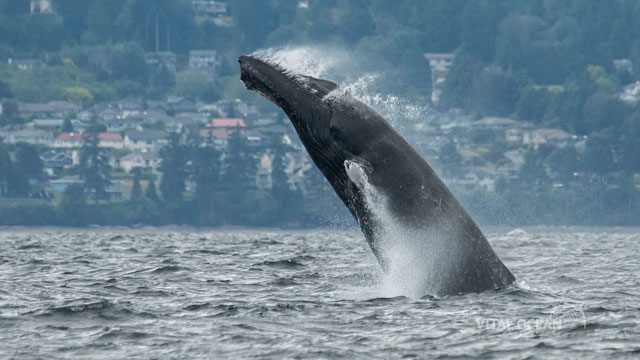
But science is not Ashley’s only tool. As a naturalist, she relies on storytelling to connect her passengers with marine wildlife. After twelve years on the water, she has a wealth of stories and can identify about 36 families in the Biggs orca population on sight.
“A nice thing about doing whale-watching tours is [that] you do get a bit of an extended time with these animals. If we’ve got a mom and her adult son and maybe a couple of young ones, by the end of the time that we spend with them—which is anywhere from thirty minutes to an hour—[passengers] are starting to be able to [distinguish] between them.”
When Ashley’s whale-watching career began in 2012, there were 84 Southern Resident killer whales. She estimates that back then, Southern Residents accounted for over 80% of her sightings. Whale-watchers are no longer allowed to view this critically endangered species.
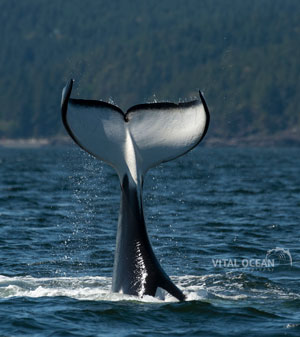
Actively avoiding the Southern Residents begins before Ashley even gets on the boat. If there are lots of sightings in Active Pass or at East Point on Saturna Island, she will head North instead. Accidental encounters with Southern Residents are rare—but when it happens, Ashley quickly identifies the individuals, reports the sighting, and leaves. These abrupt departures lead to hard but important conversations with passengers.
Shore-based whale-watching is the only way to see the Southern Residents up close, since recreational boaters must stay 400 m away from all killer whales in southern British Columbia. However, commercial whale-watchers are allowed to be 200 m away from Biggs orcas. Skilled naturalists like Ashley can distinguish between the healthy Biggs and the endangered Southern Residents using their dorsal fins and saddle patches. They also have tools to gauge distance; on a foggy day, the 6-foot dorsal fin on a male orca shows up remarkably well on radar!
Ashley sees a role for commercial whale-watchers as leaders of good behaviour for recreational boaters. They blast their horn at boats coming in too fast, wave the Whale Warning flag, and call-in help for sick or entangled marine mammals. However, if you do observe a commercial whale-watcher committing an infraction, Ashley encourages you to report the vessel to Fisheries and Oceans Canada— “we want to be held accountable.”
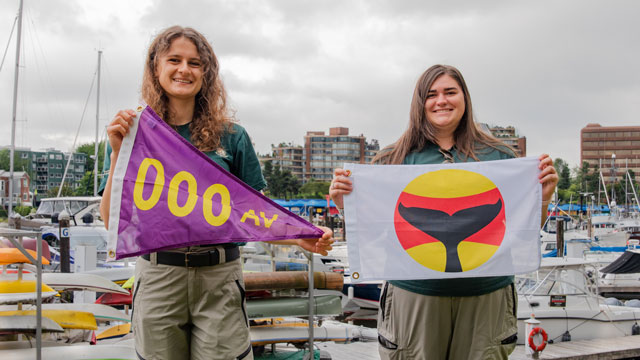
Commercial whale-watching operators fly the purple Authorized Vessel (AV) flag to show their expertise and privilege. They should not be followed by recreational boaters.
The decline of the Southern Residents changed Ashley’s professional life, but it affected her personally too. She has celebrated births and mourned deaths. She has watched calves grow up and have their own calves. The Southern Residents have become “familiar strangers […] because they are now so infrequently in our waters [when] they used to be a part of our extended families.”
Ashley recalls that a Southern Resident’s first birthday used to bring a true sigh of relief. Surviving that tenuous first year is no longer enough—a change that she thinks started with J50 Scarlet, whose rapid decline and death at three years old “shocked and startled us.” Of the two Southern Residents born in 2023, Ashley says “we try to [be] cautiously optimistic.” But she perceives more fear than anything else.
Cautious optimism summarises Ashley’s approach to her impact on passengers as well. She always concludes her tours with calls to action, including using a reusable water bottle and choosing sustainable seafood. While she firmly believes that small changes add up to a big difference, she knows that not all passengers resonate with her final conservation message.
But even if a few folks do, that means something.” Does her message resonate with you?
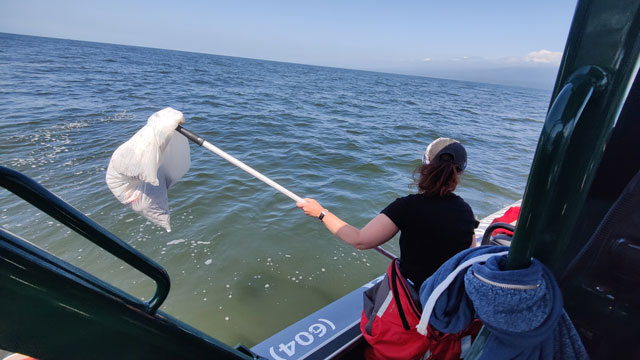
Related links
- Date modified :
